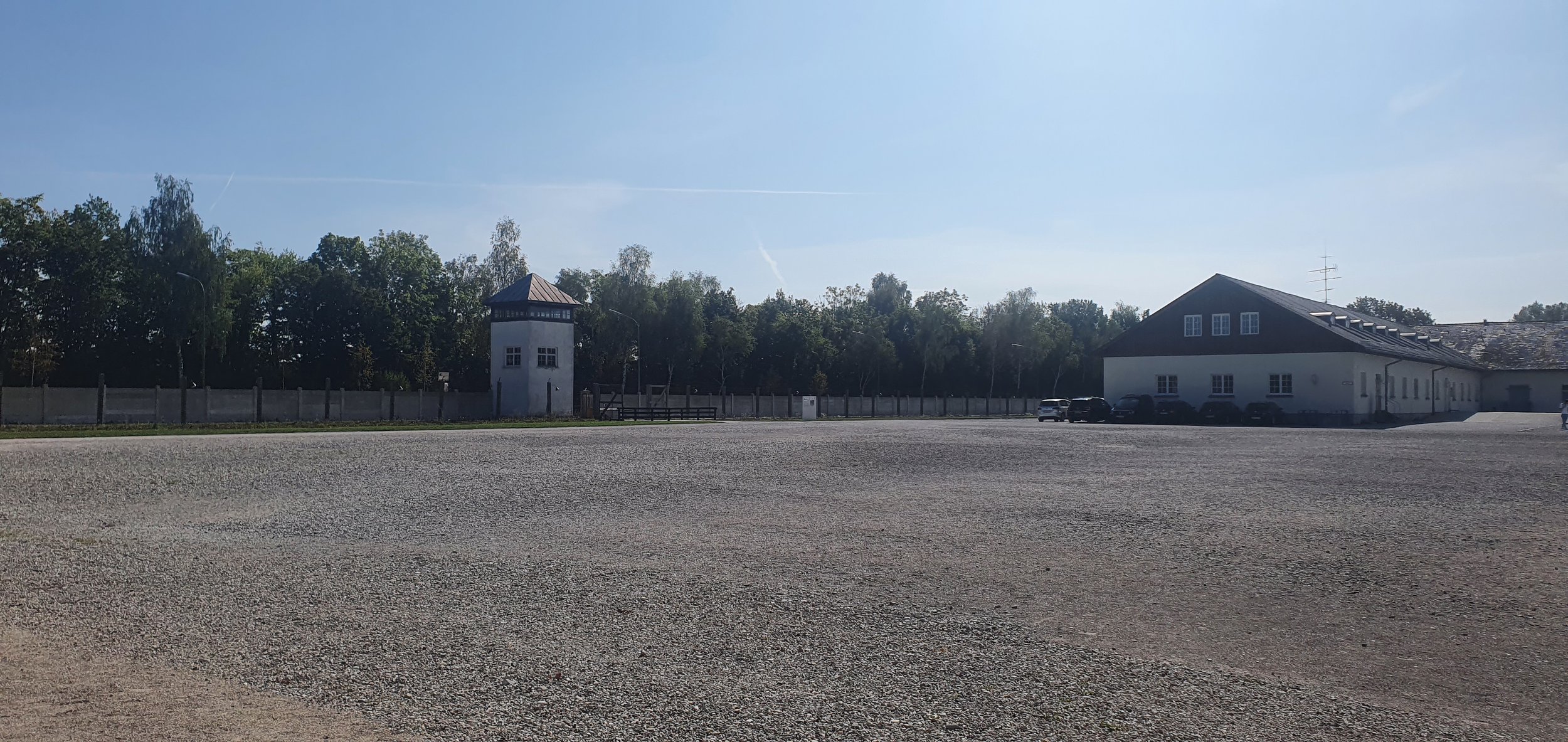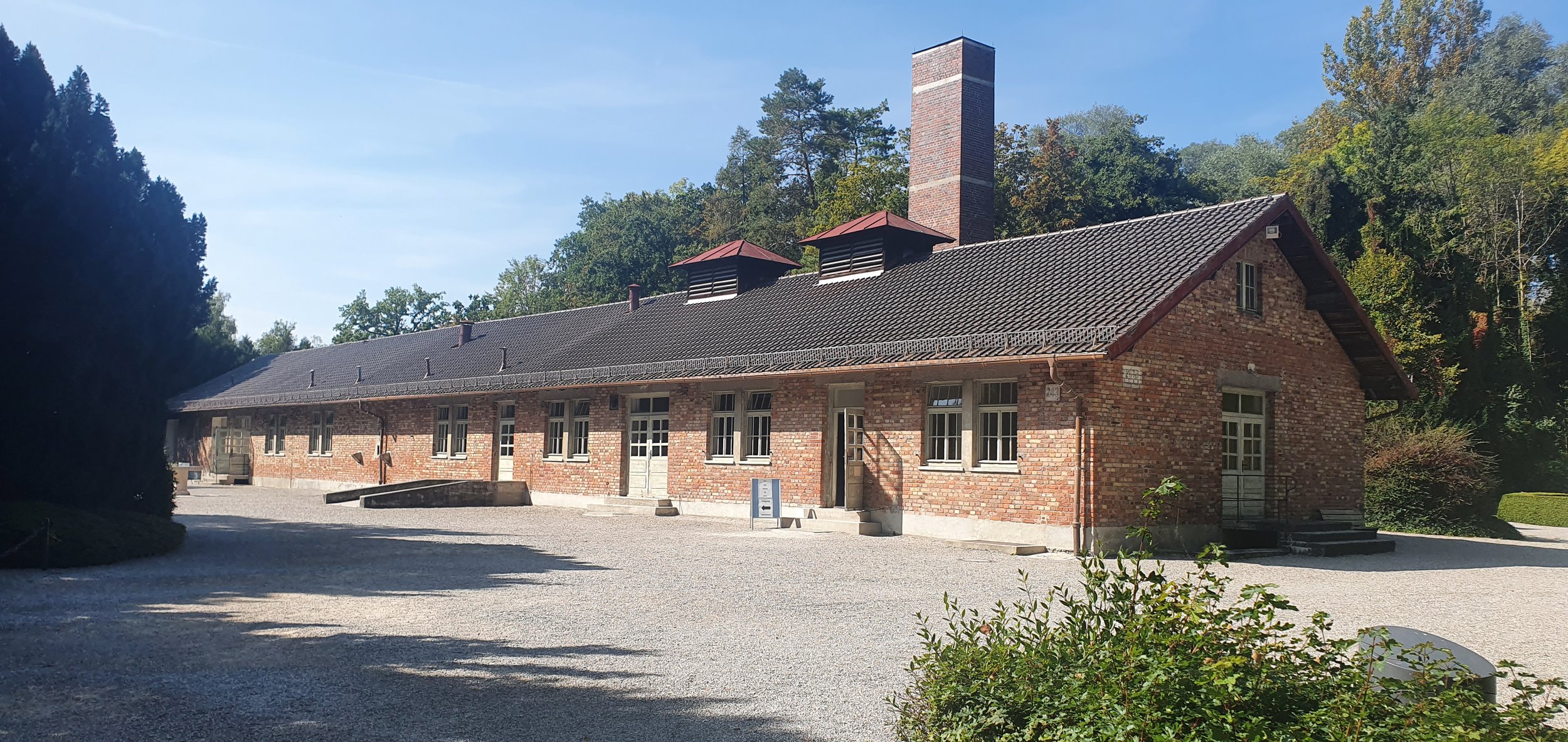
My Photos
Dachau
Entrance - Dachau was one of the first concentration camps built by Nazi Germany and the longest running one, opening on 22 March 1933. The camp was initially intended to intern Hitler's political opponents, which consisted of communists, social democrats, and other dissidents.[6] It is located on the grounds of an abandoned munitions factory northeast of the medieval town of Dachau.
Arbeit Macht Frei - The gate at the Jourhaus building through which the prisoners' camp was entered contains the slogan, Arbeit macht frei, or 'Work Sets You Free.'
Maintenance Building – this former workshop and function area is where you’ll find the camp’s main exhibitions today.

Barracks – while the camp’s 34 barracks were demolished in the 60s, there are two replica structures in-situ, giving visitors some idea of the dire living standards within them.
Prisoners lived in constant fear of brutal treatment and terror detention including standing cells, floggings, the so-called tree or pole hanging, and standing at attention for extremely long periods. There were 32,000 documented deaths at the camp, and thousands that are undocumented. Approximately 10,000 of the 30,000 prisoners were sick at the time of liberation.
Memorials – The Catholic Mortal Agony of Christ Chapel was the first religious memorial erected at the northern end of the former camp grounds. The functional buildings of the concentration camp located here were demolished in the 1950s and 1960s.
The Memorial Site on the grounds of the former concentration camp was established in 1965 on the initiative of and in accordance with the plans of the surviving prisoners who had joined together to form the Comité International de Dachau. The Bavarian state government provided financial support. Between 1996 and 2003 a new exhibition on the history of the Dachau concentration camp was created, following the leitmotif of the “Path of the Prisoners”.
Beyond the northern wall of the Memorial Site, behind the Mortal Agony of Christ Chapel, is the Carmelite Convent of the Precious Blood. The order of the Discalced Carmelites was founded by Saint Teresa of Ávila in the sixteenth century. The Carmelite nun Sister Maria Theresia deliberately chose the former Dachau concentration camp because of the horrors that took place here – it was to become a place of offering and prayer, and so establish a living symbol of hope.
Behind the accommodation barracks was a fenced-off area with functional buildings and production facilities where prisoner details were deployed to perform forced labor. The complex was demolished bit by bit in the 1950s and 1960s. Religious sites of remembrance are now located there. Behind the western row of barracks was the camp nursery (area in red). Saplings and seedlings were grown in the greenhouses that were then later planted in the SS experimental agriculture premises/“herb garden”. Adjacent to the eastern row of barracks, stalls for Angora rabbits were built in 1940 (purple). The breeding station was constantly expanded; by 1944, more than 4,000 animals were being kept there. The wool and fur of the rabbits was used as lining for the uniforms of the German Air Force.
Part of the extension work on the camp in 1937/38 included guard installations designed to make escape from the prisoner camp impossible. As the grounds were turned into a refugee camp in 1948, the camp fence and one guard tower were removed. In the 1960s, with the developing of the area into the Memorial Site, the missing guard tower was reconstructed, while the remaining towers, in part in a state of dilapidation, were restored. Sections of the camp fencing were rebuilt to provide visitors with an idea of what the guard installations were like. These reconstructed sections are located to the east of the former maintenance building and at the entrance to the crematorium area.
Memorial - Statue to the Unknown prisoner.
The crematorium area is the main place of remembrance in the Memorial Site. The area was already being used to remember the dead immediately upon liberation. In the 1960s, it underwent a cemetery-like redevelopment. Today, access to the crematorium area is via a bridge from the former prisoner camp. This does not correspond to the historical situation; the area, partly covered by trees, was in fact located in the SS camp, was bounded by a wall, and strictly separated from the prisoner camp. Only SS men responsible for running the facility and prisoners forced to cremate the bodies were allowed to enter.
At first, the SS sent the ashes of the prisoners who perished in the camp to the family concerned, buried the body not far from the camp, or took it to Munich’s East Cemetery for cremation. As the prisoner numbers and the death rate rose dramatically with the outbreak of war, in the summer of 1940 the SS had a first crematorium fitted with a furnace built. Just a year later, the capacity of this crematorium was insufficient. In the spring of 1942, work began on building “barrack X”, which was then put into operation a year later. This was a crematorium with four furnaces, a disinfection chamber for clothing, dayrooms and sanitary facilities, as well as morgues and a gas chamber disguised as a “shower bath”. There can be no doubt that “barrack X” was designed for the mass extermination of prisoners.
Between 1933 and 1945, around 41,500 persons died of hunger, exhaustion, and disease, the direct result of being tortured, or were brutally murdered in the Dachau concentration camp and its subcamps.
Killing people on a mass scale through poison gas never took place in the Dachau concentration camp. It remains unexplained as to why the SS never used the operational gas chamber for this purpose. According to one contemporary witness account, some prisoners were killed by poison gas in 1944. Somewhat secluded from the rest of the camp complex, the SS used the crematorium area as an execution site. Here prisoners were hung or shot in the back of the neck. The victims were mainly members of resistance organizations. A commemorative “path of death” takes visitors past the execution sites and the graves with the ashes.













